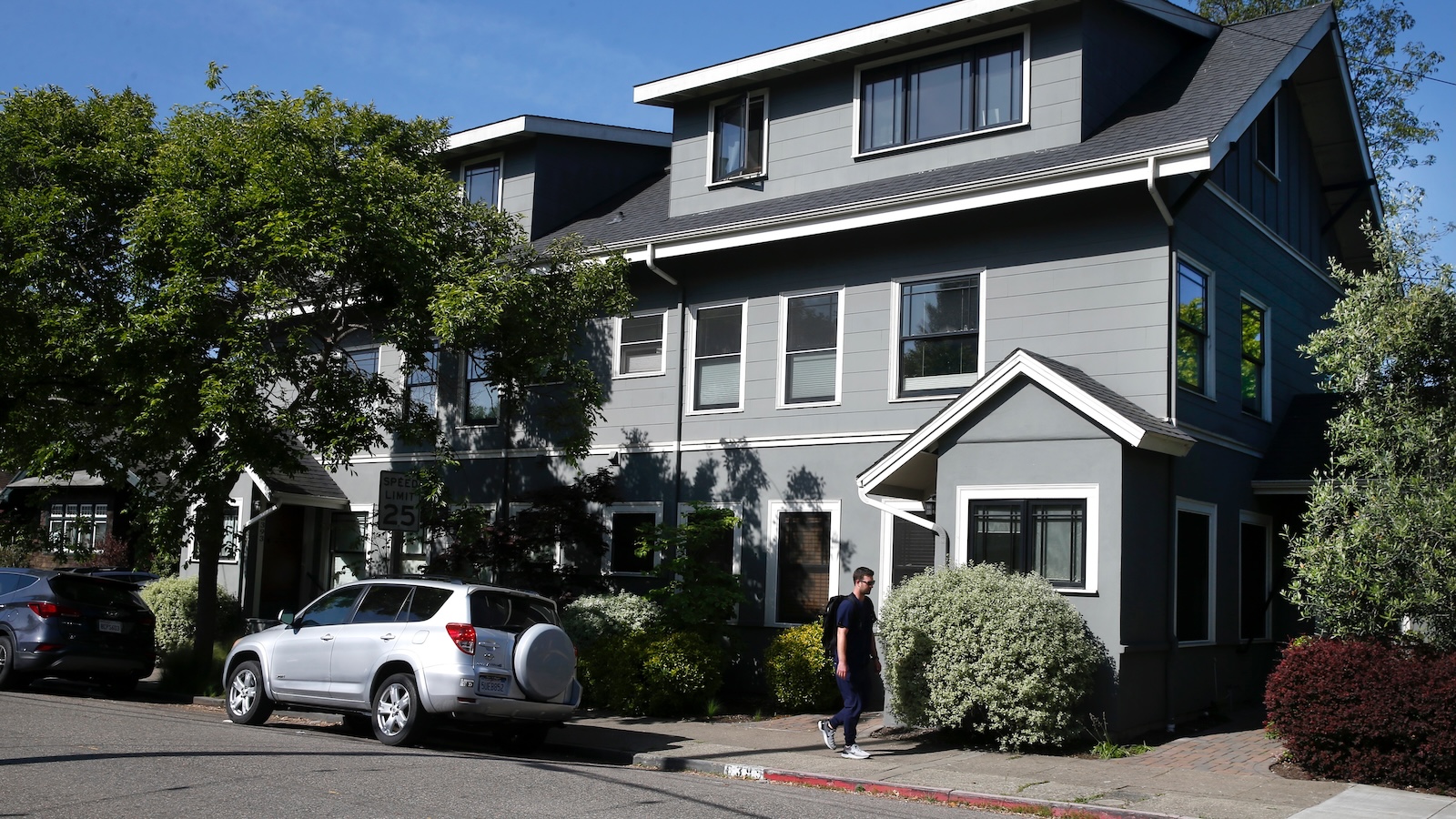For more than a century, zoning ordinances rooted in segregation have encouraged the construction of single-family homes, often at the expense of apartment buildings and other structures that promote urban density. Beyond contributing to a mounting housing shortage and spiraling prices, such policies have contributed to sprawl and dependence upon automobiles.
Canada has decided to try something different.
The government has taken the unprecedented step of offering provincial governments billions of dollars in infrastructure funds with one catch: To receive it, they must require cities to abandon single-family zoning laws and allow the construction of fourplexes. This unusually broad policy, adopted in May, has implications beyond expanding the housing stock. It could help mitigate climate change.
Research has consistently shown that multifamily structures reduce overall vehicle miles traveled by placing people closer to urban centers and mass transit. They also use materials and energy more efficiently, driving down the carbon footprint of construction. “Higher density tends to reduce emissions, and by a pretty significant amount,” said Zack Subin, a housing and climate researcher at the Terner Center for Housing Innovation at UC-Berkeley.
If Canada’s approach works, it could encourage similar policies in the United States and nudge cities toward building a greater variety of climate-friendly housing. “Historical planning, rooted in segregation and exclusion, have effectively banned the most efficient forms of housing across most of our cities and suburbs,” Subin said. “Any reform like this is moving in the right direction.”
States like Washington, Oregon, California, and cities including Minneapolis and Austin, have in recent years taken steps to eliminate or amend single-family zoning laws. But none have gone to the lengths of the government of Prime Minister Justin Trudeau. The country’s 2024 budget includes 6 billion Canadian dollars (about $4.4 billion) to accelerate new construction, with 5 billion Canadian dollars of that set aside as conditional infrastructure funds. To access the money, each of the nation’s 10 provinces and three territories must require municipalities to eliminate single-family zoning and allow fourplexes. They also must adopt updates to Canada’s building code, which is advisory, not mandatory, and enforce renter and home-buyer protections, among other measures.
Ottawa is serious about enforcing the rules, too. When the city of Oakville, Ontario rejected a measure to permit fourplexes in May, Housing Minister Sean Fraser ordered the city to return more than 1 million Canadian dollars it had received. “If provinces don’t want to make some of the changes, they don’t have to accept the funding that we are putting on the table,” he said in response to conservative leaders who rejected the idea of eliminating single-family housing. (Any money the provinces and territories don’t claim will be offered directly to municipal governments.)
To get around the fact that in most of Canada, as in the United States, zoning is handled at the local level, the government offers its carrot to provincial authorities. By dangling vast sums in front of them, federal officials hope to encourage action at “levels of government that have been resistant to change,” said Carolyn Whitzman, a housing policy expert at the University of Ottawa who helped shape the country’s latest national housing plan.

It’s an example of what is called a pro-housing policy, one in which a state (or, in this case, province) or the federal government offers money or other benefits to incentivize progressive policies like zoning reform or eliminating parking minimums. Canada’s approach echoes a proposal the Biden administration floated to dole out $10 billion in grants to states and cities to reform single-family zoning and build new housing. The program was watered down last year to provide just $85 million to cities that commit to removing barriers to affordable housing construction. (In 2021, California succeeded in introducing a program that offers municipalities pursuing zoning reform a leg up when applying for certain state grants and exclusive access to additional funds.)
Canada’s policy targets what housing experts call the “missing middle” in home construction: low-rise dwellings like townhomes and fourplexes that fall between a single-family home and an apartment building. Such structures have until recently been illegal in many parts of Canada and the United States. Allowing their construction could boost housing supply by facilitating the development of parcels previously off-limits to multifamily housing. “The majority of land with existing infrastructure — close to public transit, schools, parks, community services — have been exclusively zoned for single-family housing,” Whitzman said. The change could lead to more construction, greater housing availability, and lower costs, she said.
Whether such reforms will do that is, according to Subin at UC Berkeley, “still a live research question.” Only a few U.S. cities, including Minneapolis and Portland, Oregon, have adopted missing middle zoning reforms, and the long-term effects still aren’t understood. Local market conditions, like housing demand and land value, also affect the impact of allowing more fourplexes. Yonah Freemark, a transportation and land use policy researcher at the Urban Institute, said Canada’s reform will likely have only a modest effect on housing availability, since fourplexes tend to get developed mostly in areas that have relatively high housing values and amenities within walking distance.
But such efforts offer an often overlooked benefit: They mitigate climate change. Neighborhoods with denser housing tend to have far lower emissions than the national average, in large part because people living in them tend to drive shorter distances and use more public transit. A recent study that Subin led at the Terner Center found that across the San Francisco Bay Area, higher population density corresponded with fewer vehicle miles traveled. San Francisco residents, for example, drove one-third the distance of those in Oakley, a suburb about 50 miles to the east with far less density.
Although access to public transit is a critical factor for reducing car dependency, Subin noted that higher density leads to fewer vehicle miles traveled even when people don’t ride the bus or take the train. Simply having homes and businesses closer together means that “people are still driving shorter distances, and walking and biking for a greater share of their trips,” he said.
Fourplexes and other low-rise multifamily dwellings require less energy than single-family homes because they share insulated walls and roofs. They also require less materials to build, reducing the emissions associated with their construction. A recent study by researchers in Canada estimated that building missing middle housing in Ontario, Canada, could reduce future construction-related carbon emissions from residential buildings by as much as 46.7 percent.
For these reasons, encouraging greater housing density could be among the most underappreciated climate mitigation policies. UC-Berkeley researchers have found that building additional homes in underutilized urban areas is the most effective climate strategy available to California’s local governments. Yet most municipal climate action plans don’t mention adding housing as a climate tool, in part because it’s difficult to calculate the exact benefits.
Housing experts cautioned that missing middle reforms on their own are insufficient to address the housing shortage or make a dramatic impact on emissions. “Just because you allow for housing does not mean the housing gets built,” Freemark from the Urban Institute said, pointing out that complex market dynamics ultimately determine what types of new housing gets built. He also said that large-scale apartment buildings built near public transit would more effectively address the need for housing while maximizing the carbon-cutting benefits of greater density.
But as governments across the U.S. and Canada try new housing policies and wade into zoning reform, the two countries can learn from each other’s experiences. “There’s a lot of learning going on between them,” Whitzman said. “When we’re talking about these issues, the differences between Canada and the U.S. are very minimal.”



